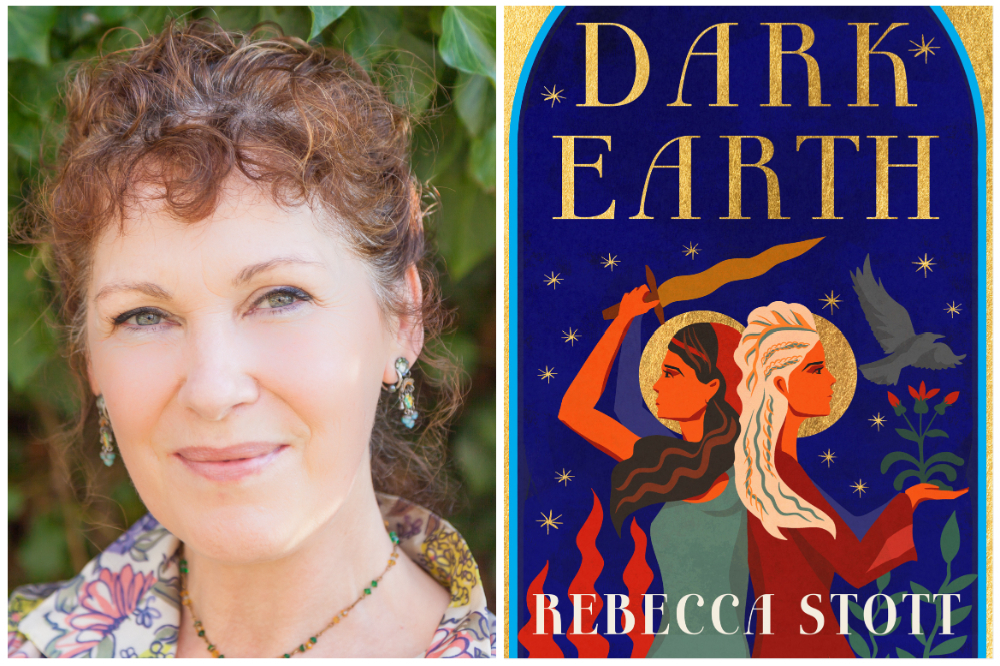Five years ago I made a trip through the deserts of Jordan with a group of friends in a hire car. Two days in, while we were in the desert, the tyre of our car burst. We managed to get the car to a tiny local town hoping we’d find someone who might change our tyre. Here, while we waited for the tyre to be changed, we came across a small ruined Roman town in the sands right next to the modern town, ancient stone ruins that were very remote, very complete. Imagine Roman columns rising from the sand. Whole streets still intact, temples open to the sky, stone buildings with the roofs long gone, mosaics with fish and other sea creatures. I walked the old Roman streets, completely bewitched, imagining what it would have been like to live there when the town was still bustling with traders from all over the Roman Empire. Then I started thinking about what it might be like to be living in the ruins only a hundred years or so after it had been abandoned.

Rebecca Stott, Dark Earth
Two years on and I found myself writing a novel not about the Roman ruins in Jordan but the ruined town of Londinium, the great Roman colony the Romans built when they occupied Britain. The Romans left Britain in 420 AD or thereabouts, withdrew all their soldiers and administrators, leaving the mile-wide city empty. For four hundred years the mile-wide town they had built, with its stone amphitheatre, forum, baths, villas, warehouses, was left open to the sky. None of the locals, Britons or the Germanic migrants who were coming into the Britain in this period seem to have gone in there, perhaps because they thought it was haunted.
In my novel, two Saxon sisters, living in the hinterland of the ruins, have to go on the run. They take refuge in the empty city, and they discover a community of women in the ruins, stripping out the metal from the ruined stones. They find a new home among these migrant women. and they find ghosts.
How do you build a sixth-century fictional world set in a ruined city like this? The task was daunting. How do you re-create the ruins? How do you create Saxon sisters? They lived in wooden huts not stone cities. They believed in spirits and strange gods.What would it have been like to go into a crumbling stone city full of fallen statues and ghosts?
I read as much as I could about the period but historians and archaeologists know so little. People call this the darkest corner of the Dark Ages. So I watched films set in ruined cities. The most important films I watched were perhaps not the obvious ones. For a sense of a ruined city that has a life of its own I watched Russian film director Tarkovsky's haunting Stalker, a film in which a stalker takes two men into the ruins of a Russian abandoned city, only to find that the city has a life of its own. To build a sense of two sisters on the run from local ‘overlords’, I watched the amazing Thelma and Louise. And because my city is overrun with birds who seem to have their own control over the city, I watched Hitchcock’s terrifying The Birds. Sometimes, only film can help a writer feel her way, and see her way, into an alien, potentially unimaginable, world.
Dark Earth by Rebecca Stott is published by 4th Estate (£14.99)


